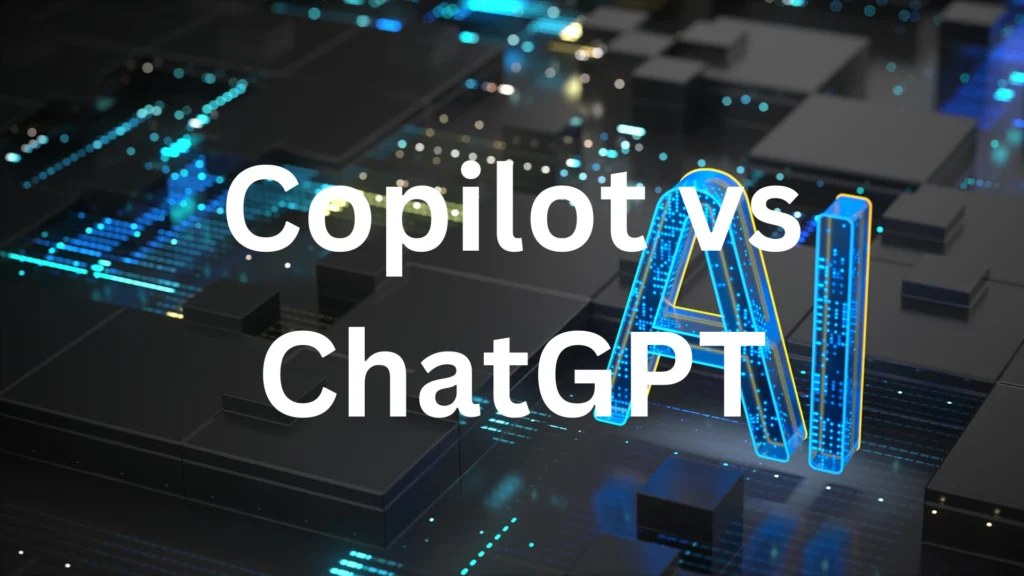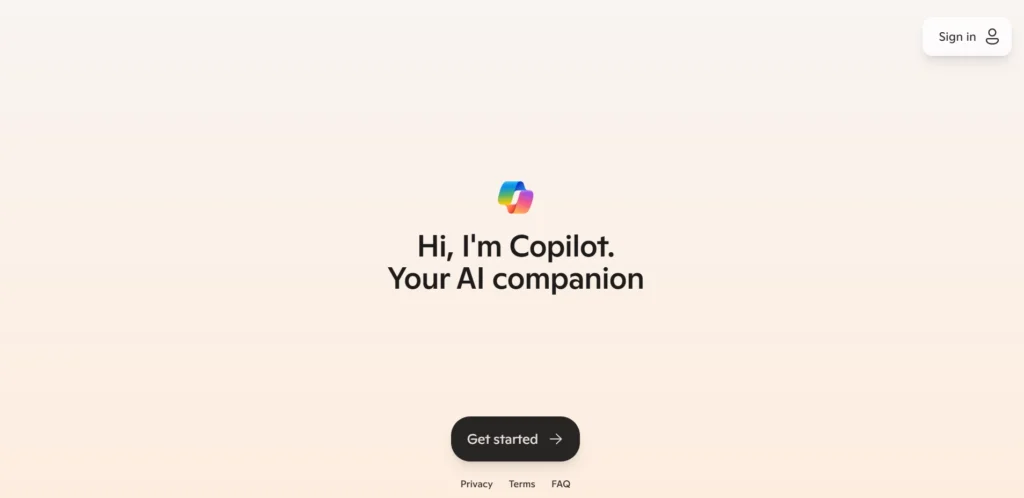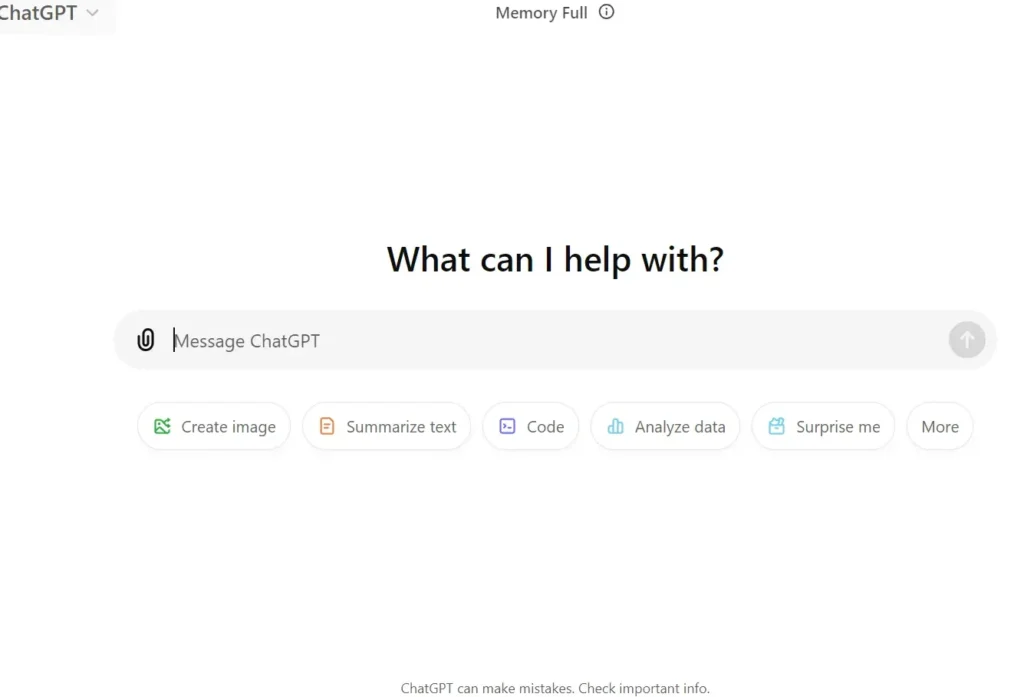Copilot vs ChatGPT: Which One is for the Win?
An Overview on Copilot vs ChatGPT
An interesting phenomenon is the increasing number of AI tools that are built to assist in our daily endeavors. In the realm of AI-driven assistance, two names consistently stand out: Copilot and ChatGPT. Two are good, but which one is better – the ultimate king of the hill? Below, we will in detail go through the features of Copilot vs ChatGPT to assist you in determining which is ideal for you.

Understanding the Basics: What Are Copilot and ChatGPT?
To start with the comparative analysis, it is crucial to determine the strengths that each of these AI tools has to offer.
Copilot is a tool that is developed by GitHub to complement its code collaboration platform, and it was jointly created with OpenAI. By nature, it can easily be embedded into Editors such as VS Code, providing code samples, assisting in debugging, and giving you an overall more efficient development environment. They use it in particular, to study AI-assisted Python programming with GitHub Copilot and to improve efficiency while avoiding disruptions. AI models of Copilot are particularly suitable for developers who want to get help with coding immediately.

On the other hand, we have ChatGPT, a pragmatic conversational AI from OpenAI that can and does much more than just assist with codes. It is programmed to have conversations, take questions, and even come up with answers, generate articles, and come up with ideas on its own. The possibilities have increased with ChatGPT 4 which not only provides better context-aware conversations but also has the ability to have multimodal input processing which takes text and image input. This opens up still other applications beyond just code generation, to encompass an even broader set of uses.

The Battle of Features: ChatGPT vs Microsoft Copilot
1. Ease of Use
When comparing Copilot vs ChatGPT, the ease of use is a crucial factor. Copilot seamlessly integrates with your development environment. Just start coding, and it suggests relevant code snippets. This feature is invaluable for developers who need instant coding assistance without shifting context. Copilot has a straightforward interface within IDEs, ensuring that your workflow remains uninterrupted.
Conversely, ChatGPT operates as a standalone tool, accessible via a browser or integrated applications. While not embedded in coding software by default, ChatGPT excels in versatility. You can use it to brainstorm code logic, generate documentation, or even write creative pieces. The conversational interface is intuitive, and many users appreciate its ability to provide in-depth answers that go beyond simple suggestions.
Winner: If you’re a developer looking for coding assistance within your IDE, Copilot wins. For broader, multi-purpose assistance, ChatGPT takes the prize.
2. Capabilities in Programming
GitHub Copilot is specifically tailored for code completion. It excels at suggesting code snippets, completing functions, and even generating boilerplate code. Developers can easily learn AI-assisted Python programming with GitHub Copilot and ChatGPT by using both tools in tandem. Copilot’s powerful integrations make it a go-to tool for software engineers who prioritize efficient and fast coding.
ChatGPT 4 offers a more comprehensive view. While it may not integrate directly into coding environments, it can write complex algorithms, explain code in-depth, and assist in debugging. This AI tool is a robust companion for learners and developers who need detailed explanations or are exploring a variety of programming challenges.
Winner: For raw code completion and in-editor help, Copilot is superior. For explanations, debugging, and brainstorming coding logic, ChatGPT has the edge.
Want to see what other tools can assist you in programming and software design? Then this is for you!
3. Multimodal Capabilities
A newer aspect of AI is its ability to understand and generate various types of content beyond text. Copilot, while powerful, is mostly confined to code. It does not handle multimodal tasks such as processing images or other non-text inputs. This limits its versatility compared to other advanced AI tools.
ChatGPT 4 shines as a multimodal generative AI copilot for human pathology and more. This version is capable of processing both text and visual input, making it versatile for industries like healthcare, creative fields, and beyond. Users have leveraged ChatGPT for tasks that require a broader range of input types, enabling more complex problem-solving capabilities.
Winner: ChatGPT clearly wins this round with its ability to handle multimodal tasks, which opens up new avenues for creative and professional applications.
Copilot AI Reviews: What Do Users Say?
Feedback from developers who use Copilot tends to highlight its ability to speed up development. Many reviews praise it as an excellent coding assistant that suggests clean, efficient code. Some developers have even claimed that Copilot helped them create video with AI Copilot for embedded projects and quick prototyping. Its tight integration with Visual Studio Code and other IDEs makes it a popular choice among those who code frequently.
However, there’s a caveat. Copilot sometimes lacks contextual awareness, especially for large codebases or complex problems. In such cases, developers find themselves turning to ChatGPT for a deeper analysis and explanation of code logic. ChatGPT’s ability to converse and understand the context at a more granular level makes it a preferred tool for complex problem-solving.
User Verdict: Copilot is hailed as a productivity booster, while ChatGPT is viewed as a versatile problem solver.
Use Cases: Where Each AI Shines
Copilot
- For Developers: If you’re a developer seeking an AI that integrates seamlessly into your coding environment and helps with code snippets, Copilot is a powerful ally. Its ability to function within IDEs means a smoother experience for real-time development. By suggesting relevant code, it reduces the mental load on developers and minimizes interruptions.
- Career-Oriented: Individuals interested in pursuing Copilot AI careers may find a niche in leveraging this tool for efficient, AI-assisted development workflows. Companies increasingly value proficiency with tools that can expedite development cycles and streamline complex projects.
- Specialized Applications: Developers working in specific fields, like embedded systems or those looking to create video with AI Copilot, find it particularly useful. Copilot’s ability to provide immediate, actionable code suggestions helps in rapid prototyping and development. This feature can be crucial for developers aiming to meet tight deadlines or explore innovative projects.
ChatGPT
- For Versatile Assistance: Beyond just coding, ChatGPT can help with writing, ideation, customer service chatbots, and more. It is the AI tool of choice for those who need multi-functional assistance. Content creators, marketers, and educators frequently use ChatGPT to brainstorm ideas and generate written content. The flexibility to switch between coding assistance, writing, and idea generation makes ChatGPT a highly adaptable tool.
- ZoomInfo AI Copilot: Companies utilizing tools like ZoomInfo AI Copilot often find that pairing it with ChatGPT boosts data analysis and customer interaction processes. ChatGPT’s capability to break down complex data and provide simplified explanations makes it a valuable asset. Its use in customer engagement, report generation, and research has proven to enhance productivity and decision-making.
- Learning and Debugging: Beginners learning to code often use ChatGPT to explain concepts or debug their work. It’s especially useful for those seeking a deeper understanding of coding principles or troubleshooting errors. The conversational format helps beginners feel more confident as they progress, receiving step-by-step guidance that clarifies difficult concepts.
Head-to-Head: Copilot vs ChatGPT for Learning
If you’re trying to learn AI-assisted Python programming with GitHub Copilot and ChatGPT, the combined use of both tools can be incredibly effective. Each tool offers distinct strengths that cater to different aspects of the learning process.
- Copilot helps you write and complete code with instant suggestions, making it perfect for hands-on learning. It guides you through the process by providing coding templates and patterns that can be adapted to various projects. The real-time assistance allows learners to see practical implementations of code as they write it, helping them understand coding structures.
- ChatGPT, however, goes the extra mile by explaining what the code does, teaching best practices, and offering debugging advice when you hit a wall. This AI provides detailed insights into coding principles, helping learners not only fix errors but gain a deeper understanding of why those errors occurred in the first place. Its explanations often include best practices that can refine your coding approach and make your overall projects more efficient and maintainable.
Best Strategy: Use Copilot for coding in real-time and ChatGPT for learning the logic and understanding programming concepts. When combined, these tools create a holistic learning experience that boosts both coding skills and problem-solving abilities.
Limitations: Where They Fall Short
Copilot
- Context Limitations: Copilot may struggle with large, context-heavy projects where a comprehensive understanding is required. Its suggestions are sometimes too generic for intricate code structures, necessitating additional developer input.
- Dependency: Some developers fear becoming overly reliant on Copilot for simple coding tasks. This could potentially hinder learning if not supplemented by manual coding practices and deeper understanding.
ChatGPT
- Integration: ChatGPT’s lack of direct integration into coding environments means you often need to switch between tools. This can disrupt workflow, especially when coding is the primary task.
- Complex Code Generation: While capable, ChatGPT’s output can sometimes lack optimization for real-world applications. It may generate code that requires further refining and testing before use in production.
An Overall Comparison on Copilot vs ChatGPT
| Feature | Copilot | ChatGPT |
|---|---|---|
| Primary Use | Code assistance within IDEs | Multi-functional assistant (coding, writing, brainstorming, etc.) |
| Ease of Use | Integrated within coding environments (e.g., VS Code) | Browser-based or through applications; versatile, not tied to coding environments |
| Programming Capabilities | Tailored for code snippets, functions, and boilerplate code | Provides complex algorithm explanations, debugging, and versatile programming help |
| Multimodal Capabilities | Limited to text-based code completion | Can process text and images (multimodal capabilities) |
| User Feedback | Speedy coding assistant but sometimes lacks contextual awareness in complex codebases | Highly valued for in-depth problem-solving and contextual understanding |
| Ideal Users | Developers needing seamless in-IDE coding support | Developers, writers, learners, customer service agents, and more |
| Best for Learning | Provides code templates and hands-on suggestions | Explains concepts deeply, making it ideal for understanding programming principles |
| Limitations | Context limitations with large projects; potential for over-reliance on code suggestions | No direct IDE integration; sometimes generates non-optimized code |
| Final Recommendation | Ideal for developers focused on efficiency and code suggestions within IDEs | Best for those seeking a versatile, conversational assistant with broad applications |
Final Verdict: Copilot vs ChatGPT — Who Wins?
So, which AI tool should you choose? Here’s the takeaway:
- Choose Copilot if you’re a developer focused on coding efficiency, working primarily within an IDE, and need seamless code suggestions. It’s ideal for quick, context-relevant coding help and maintaining development momentum.
- Choose ChatGPT if you want an all-around AI assistant capable of coding, learning, generating content, and explaining complex concepts. ChatGPT’s ability to offer deep insights, break down complex topics, and support creative brainstorming makes it an exceptional companion for developers and non-developers alike.
If either one of them fulfils your needs, then that’s really the finally winner.